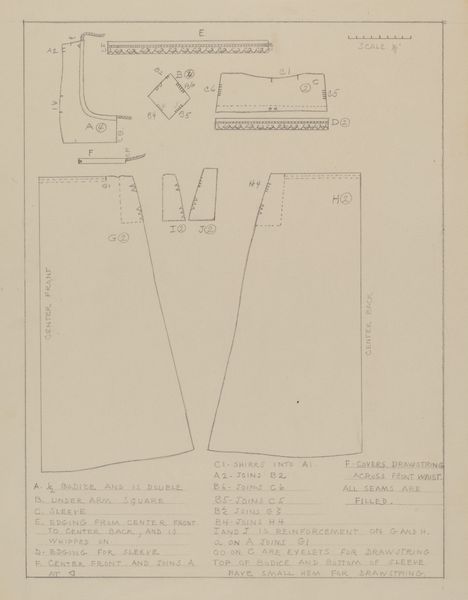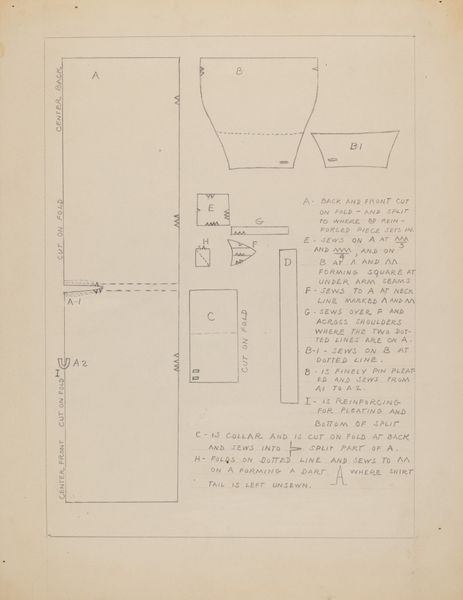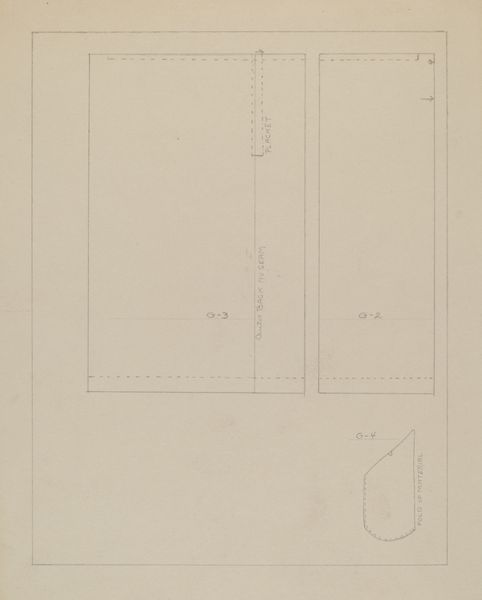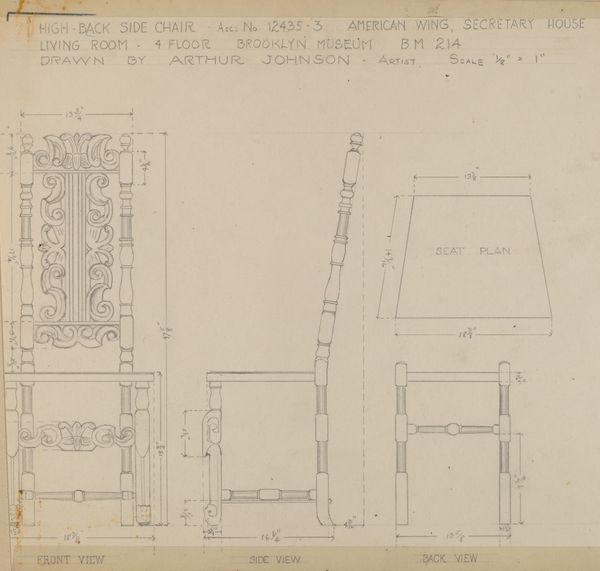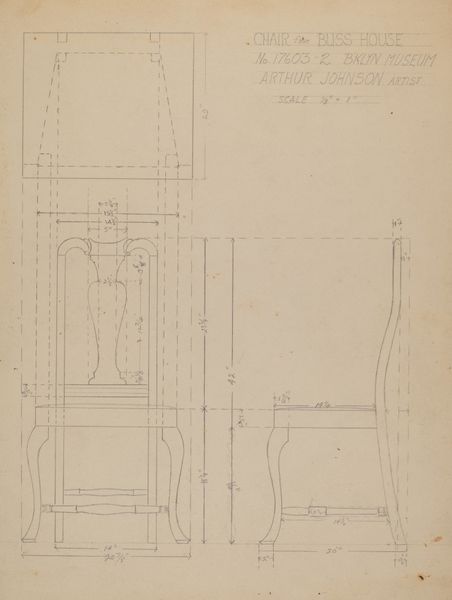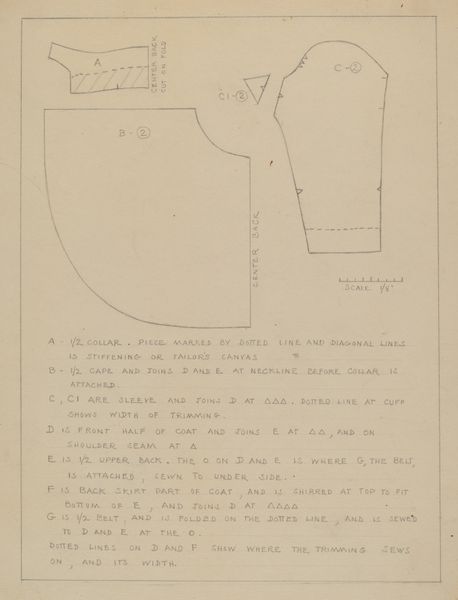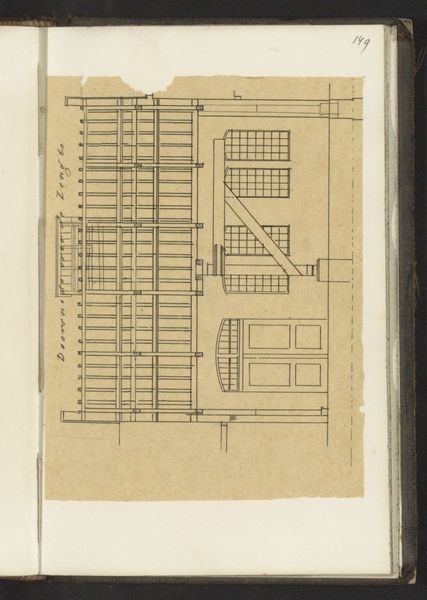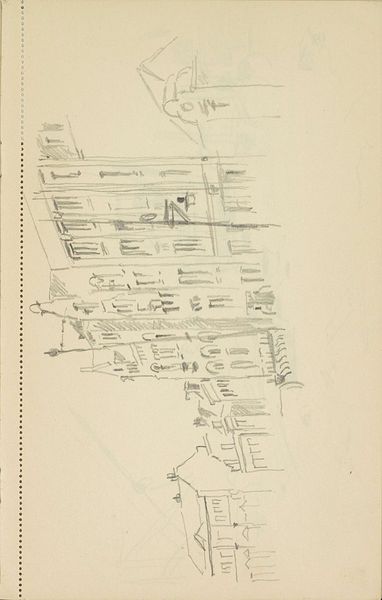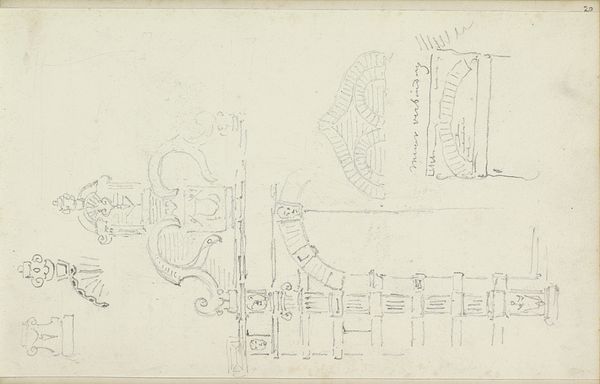
drawing, paper
#
drawing
#
paper
Dimensions: overall: 27.5 x 22.1 cm (10 13/16 x 8 11/16 in.)
Copyright: National Gallery of Art: CC0 1.0
Curator: This pencil drawing from about 1936 presents us with a dress pattern. We see different shapes, seemingly abstract until you realize these are all components designed to come together. Editor: It feels ghostly, like a blueprint of a life or memory barely etched on paper. A sort of intimacy with craft is present too. It reveals the technical plans as ghostly remainders. Curator: Absolutely, these seemingly simple shapes hold such powerful symbolic weight. Each piece carefully marked for its purpose; the pattern contains inherent order and expectation, don't you think? We can intuit its function for constructing fabric into a familiar sartorial symbol, the dress, a visual vocabulary unto itself. Editor: Yes, and think about who used this. In the 1930s, women's fashion often served to reinforce societal roles and expectations, but also provided agency to create their image and challenge traditional norms through dress. Sewing was also essential skill. A pattern like this can signify both conformity and rebellion. Did crafting it make room for one or the other, perhaps even both, simultaneously? Curator: And within the pattern itself, the specific details – dart placements, seam allowances, grainlines – become symbolic representations of a set of conventions or even values that are meant to give structure to human expression. What kind of symbolism of control and order does that unleash? Editor: I suppose the image also triggers a debate over handmade versus mass-produced clothing, each carrying its own sociopolitical load, especially with ever present concerns about sustainable practices. The existence of this pattern underscores the idea that we actively participate in creating ourselves and how the material interacts with who we want to be. It offers tangible ways to shape our identities, wouldn't you agree? Curator: Fascinating. It began as technical diagram and evolved into complex symbolism and an invitation to question production and consumption. Editor: I'm struck by the silent power of everyday objects, which become the subtle narratives shaping lives and movements.
Comments
No comments
Be the first to comment and join the conversation on the ultimate creative platform.
